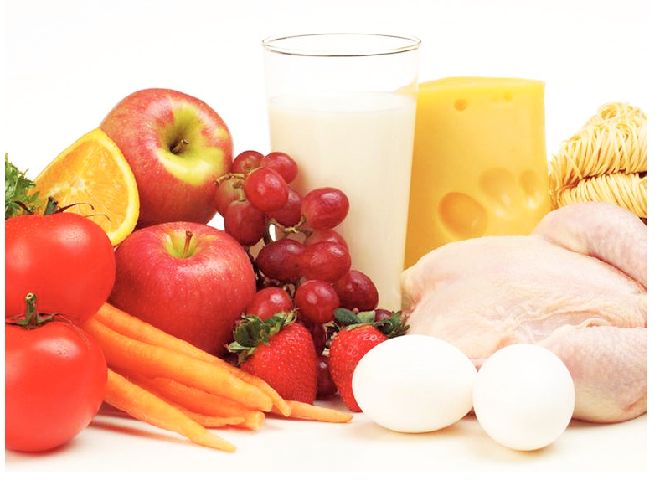Just get started
Finding fresh enthusiasm for health and wellness
HEALTH | Patrick Yeagle
It happened so subtly that I hardly noticed.
From junior high through the beginning of college, I got fat. At just over six feet tall and weighing more than 270 pounds, I was positively obese – nearly 100 pounds over my ideal weight. I felt isolated and humiliated every time I went clothes shopping for the next size up, only to eventually discover that I had reached the size limit of what most stores carry.
Honestly, I was in denial. I knew I ate too much, and I knew I my diet was unhealthy, but I didn’t care. I had decided to enjoy whatever morsels I wanted, and I would deal with the consequences later. I still remember seeing my own pudgy face in the mirror after weighing in at 275 pounds during my second year of college. I was angry with myself and I knew I needed to make a change.
My sister Natalie, now a registered dietitian, had been preaching to me for a while the virtues of a healthy diet.
“It’s an investment in your future,” she would always say. Eventually, her advice began to creep into my subconscious. More vegetables, less meat, fewer processed foods and more exercise now will really pay off later, she repeated. I didn’t like vegetables, but I loved meat and junk food, so I decided to start with the one change I could stomach: exercise.
I tentatively took up running – just a few minutes on the treadmill or down the street a few blocks – and I eventually began to notice that I had more energy, a smaller appetite and more self-confidence. More importantly, I began to lose weight. It was slow at first – almost as slow as the rate at which I had gained it – but that accelerated as I intensified and diversified my workout. That wasn’t enough.
My diet was still pretty poor, and I still carried plenty of extra weight. It wasn’t until I made a commitment to eating better – mainly through becoming a vegetarian – that I fully realized the power of a healthy diet. Almost immediately after I replaced fast food with fresh veggies and began to eat smaller portions, my weight started to correct itself.
To date, I have lost 60 pounds, run two half marathons and never felt better. For me, exercise is an addiction of sorts that still battles my love of food, but now I relish waking up early to run several miles before work or lifting weights until my muscles burn with exhaustion. It hasn’t always been easy, but it has definitely been worth every mile, every bicep curl and every broccoli floret to know that I’m looking good, feeling great and living well.
Adopting a healthy, active lifestyle can pay off in big ways later on. According to the Centers for Disease Control, obesity can lead to diabetes, heart disease, cancer, stroke, arthritis and a host of other problems. It affects more than just health, however. CDC says obese people spent $1,400 more on average per year in medical care costs than people at a normal weight in 2006, and obesity-related medical care costs ran as high as $147 billion nationwide in 2008.
Eating a healthy and diverse diet can also help prevent injury and speed recovery. Getting adequate iron, zinc and calcium, for example, helps strengthen bones and is necessary for the proper healing of fractures. Getting enough protein provides the basic building blocks of cells – particularly muscle, the cells we all want more of. When we reach seniority, living a healthy, active lifestyle can help promote mobility and blunt the effects of aging. That’s to say nothing of the confidence boost that looking good provides.
How can someone start living healthier? As with any major health decision, it’s important to get input from a qualified expert – in this case a doctor or dietitian. But there are small steps anyone can take that will make a difference over the long term.
One of the most important pillars of a healthy diet is portion control. That simply means eating an appropriate amount of food. A serving of meat, for example, should be about the size of a deck of cards, while a serving of potatoes is about the size of a tennis ball. Try to approach eating as sampling rather than gorging, and make your portions reflect that.
To start eating healthier foods, start small.
Substitute one unhealthy snack a day with a healthy one. Once that’s no longer a challenge, shift one of your meals in a healthier direction. Pretty soon, you’ll be eating from an entirely different and healthier menu. This is one area where a dietitian’s input can be very valuable.
Finally, incorporate some activity into your day. Start with something comfortable, such as walking around the block, and work toward ever more challenging goals. Don’t go too fast or too hard at first, or you may burn out or injure yourself. Most importantly, don’t get discouraged if you don’t see results immediately. When I first started running, I didn’t notice any difference for weeks. My sister gently reminded me, “It took a long time for you to gain weight, so you shouldn’t expect to lose it overnight.” Seek to make a healthy diet and exercise part of your daily life and stick with it; you will see results eventually.
Many people have made New Year’s resolutions, which most will promptly forget about.
Instead of making a resolution this year, consider making a lifestyle change. Consider it an investment in your future.
Contact Patrick Yeagle at [email protected].